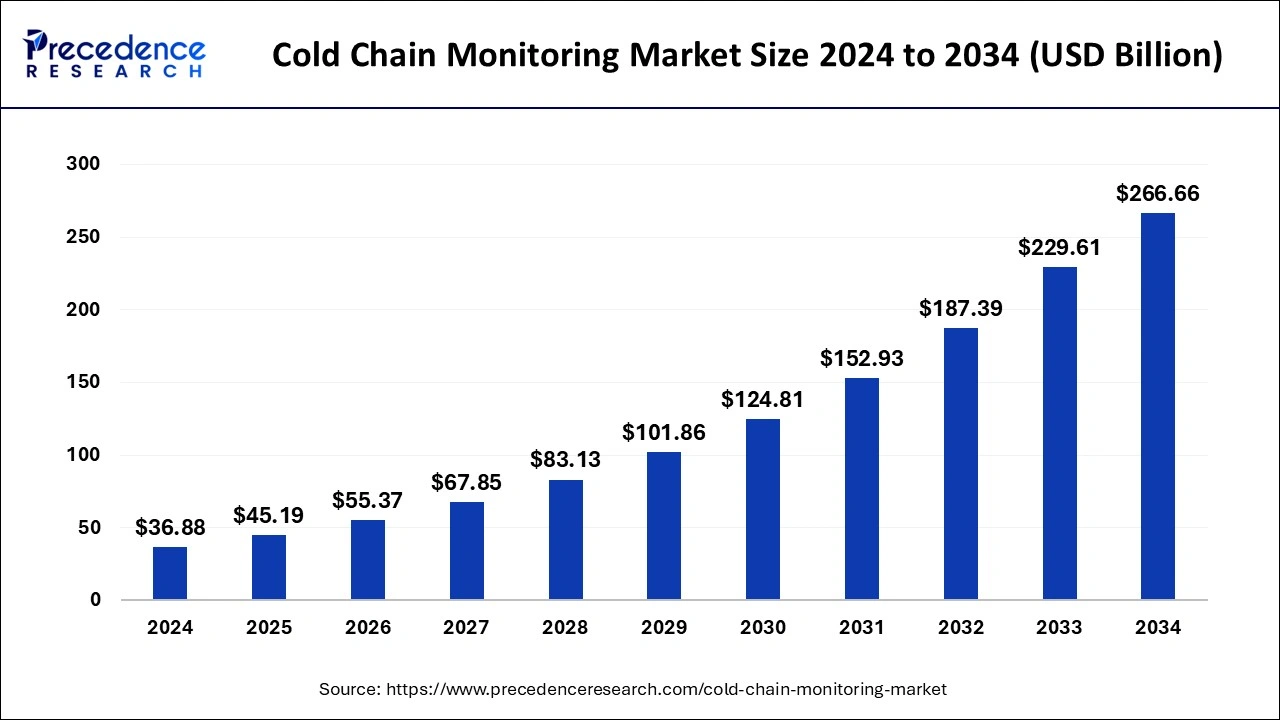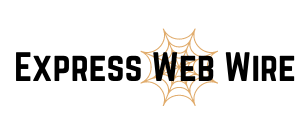The cold chain monitoring market size reached USD 30.10 billion in 2023 and is predicted to hit USD 229.61 billion by 2033, expanding at a CAGR of 22.53% from 2024 to 2033.
Key Points
- North America led the market with a major market share of 35% in 2023.
- Asia-Pacific is expected to expand at the fastest CAGR of 25.63% between 2024 and 2033.
- By component, the hardware segment has held the largest market share of 79% in 2023.
- By component, the software segment is anticipated to grow at a remarkable CAGR of 23.72% between 2024 and 2033.
- By application, the food & beverages segment has recorded over 78% of market share in 2023.
- By application, the pharmaceuticals segment is projected to grow at the fastest CAGR of 24.52% over the projected period.

The cold chain monitoring market is witnessing significant growth driven by the increasing demand for temperature-sensitive products across various industries such as pharmaceuticals, food and beverages, and chemicals. Cold chain monitoring involves the real-time tracking and monitoring of temperature-sensitive products throughout the supply chain to ensure product quality, integrity, and compliance with regulatory standards. With the growing complexity of supply chains and the rising importance of product safety and quality assurance, the adoption of cold chain monitoring solutions is becoming essential for companies to mitigate risks and maintain the integrity of their products.
Get a Sample: https://www.precedenceresearch.com/sample/3979
Growth Factors:
Several factors contribute to the rapid growth of the cold chain monitoring market. One key driver is the expanding global trade of temperature-sensitive goods, including perishable foods, vaccines, and biopharmaceuticals. As supply chains become more globalized, the need for efficient cold chain logistics and temperature monitoring solutions increases to prevent product spoilage, reduce wastage, and ensure compliance with stringent quality and safety regulations.
Moreover, the increasing adoption of cold chain monitoring technologies is driven by the growing emphasis on sustainability and environmental stewardship. Cold chain optimization not only helps reduce food and product waste but also minimizes energy consumption and greenhouse gas emissions associated with inefficient transportation and storage practices. This aligns with corporate sustainability goals and regulatory initiatives aimed at reducing carbon footprints across industries.
Furthermore, advancements in sensor technology, wireless connectivity, and data analytics have enhanced the capabilities of cold chain monitoring solutions. Real-time monitoring and remote sensing technologies enable proactive temperature management, predictive maintenance, and compliance monitoring, thereby optimizing supply chain efficiency and reducing the risk of temperature excursions. Additionally, the integration of Internet of Things (IoT) platforms and cloud-based software solutions enables seamless data collection, analysis, and decision-making, driving market adoption and innovation.
Region Insights:
The cold chain monitoring market exhibits a global presence, with North America, Europe, Asia-Pacific, and other regions representing significant growth opportunities. North America dominates the market due to the presence of a mature cold chain infrastructure, stringent regulatory standards, and high adoption of advanced monitoring technologies. The region’s pharmaceutical and biotechnology industries, in particular, drive demand for cold chain monitoring solutions to maintain product efficacy and compliance with regulatory requirements.
In Europe, strict regulations governing the transportation and storage of temperature-sensitive products drive market growth. The European Union’s Good Distribution Practice (GDP) guidelines and the Pharmaceutical Inspection Co-operation Scheme (PIC/S) regulations mandate the implementation of robust cold chain monitoring practices to ensure product quality and patient safety. Additionally, the region’s strong emphasis on food safety and quality standards contributes to the adoption of cold chain monitoring solutions across the food and beverage industry.
Asia-Pacific emerges as a rapidly growing market for cold chain monitoring, fueled by the expanding pharmaceutical and healthcare sectors, particularly in countries such as China, India, and Southeast Asia. The increasing demand for vaccines, biologics, and specialty pharmaceuticals necessitates sophisticated cold chain logistics and temperature monitoring solutions to maintain product integrity and efficacy. Moreover, the region’s growing middle-class population and rising consumer demand for high-quality perishable goods drive investments in cold chain infrastructure and technology adoption.
Cold Chain Monitoring Market Scope
| Report Coverage | Details |
| Growth Rate from 2024 to 2033 | CAGR of 22.53% |
| Global Market Size in 2023 | USD 30.10 Billion |
| Global Market Size by 2033 | USD 229.61 Billion |
| U.S. Market Size in 2023 | USD 7.90 Billion |
| U.S. Market Size by 2033 | USD 60.27 Billion |
| Base Year | 2023 |
| Forecast Period | 2024 to 2033 |
| Segments Covered | By Component and By Application |
| Regions Covered | North America, Europe, Asia-Pacific, Latin America, and Middle East & Africa |
Cold Chain Monitoring Market Dynamics
Drivers:
Several factors drive the adoption of cold chain monitoring solutions in various industries. One primary driver is the increasing globalization of supply chains and the growing complexity of distribution networks. As companies expand their operations globally and source products from diverse geographic regions, ensuring the integrity of temperature-sensitive products becomes paramount to maintain product quality and compliance with regulatory standards.
Additionally, the rise of e-commerce and direct-to-consumer distribution models amplifies the need for robust cold chain monitoring solutions. With more consumers purchasing perishable goods online, companies must ensure the seamless delivery of temperature-sensitive products while maintaining product safety and quality throughout the last-mile delivery process. Cold chain monitoring technologies enable real-time tracking, temperature monitoring, and condition monitoring, enhancing visibility and control over the entire supply chain.
Furthermore, stringent regulatory requirements and quality standards drive market adoption, particularly in industries such as pharmaceuticals and healthcare. Regulatory agencies impose strict guidelines on the transportation and storage of temperature-sensitive products to prevent product degradation, contamination, and efficacy loss. Compliance with regulatory standards such as Good Distribution Practice (GDP), Good Manufacturing Practice (GMP), and Hazard Analysis and Critical Control Points (HACCP) necessitates the implementation of comprehensive cold chain monitoring solutions.
Opportunities:
The cold chain monitoring market presents numerous opportunities for innovation and expansion. One significant opportunity lies in the development of advanced sensor technologies and IoT-enabled devices for real-time monitoring and tracking of temperature-sensitive products. Emerging technologies such as RFID sensors, Bluetooth Low Energy (BLE) beacons, and wireless temperature loggers offer enhanced data accuracy, connectivity, and scalability, enabling proactive temperature management and predictive analytics.
Moreover, the integration of cold chain monitoring solutions with blockchain technology presents opportunities for enhancing supply chain transparency, traceability, and integrity. By leveraging blockchain’s distributed ledger technology, stakeholders can securely record and verify temperature data, product provenance, and transaction history, reducing the risk of counterfeit products, fraud, and supply chain disruptions. Blockchain-enabled cold chain monitoring platforms also facilitate regulatory compliance and auditability, enhancing trust and accountability across the supply chain.
Furthermore, the expansion of cold chain logistics into emerging markets and underserved regions presents growth opportunities for cold chain monitoring solution providers. As companies seek to penetrate new markets and address the growing demand for temperature-sensitive products in developing countries, investments in cold chain infrastructure and technology become essential. Strategic partnerships, joint ventures, and collaborations with local stakeholders can facilitate market entry and accelerate technology adoption in emerging economies.
Challenges:
Despite the promising growth prospects, the cold chain monitoring market faces several challenges that could hinder its expansion. One such challenge is the high cost associated with implementing and maintaining cold chain monitoring solutions. The deployment of advanced sensor technologies, data analytics platforms, and IoT infrastructure requires substantial upfront investment and ongoing operational expenses, particularly for small and medium-sized enterprises (SMEs) with limited resources.
Additionally, interoperability issues and data silos pose challenges to seamless integration and data exchange across different cold chain monitoring systems and stakeholders. Incompatible data formats, communication protocols, and proprietary software solutions hinder data visibility, collaboration, and decision-making, leading to operational inefficiencies and fragmented supply chain management practices. Standardization efforts and industry-wide collaboration are needed to address interoperability challenges and facilitate data interoperability and exchange.
Moreover, cybersecurity risks and data privacy concerns present significant challenges to the adoption of IoT-enabled cold chain monitoring solutions. With the proliferation of connected devices and the increasing volume of sensitive data generated by cold chain monitoring systems, the risk of cyberattacks, data breaches, and unauthorized access escalates. Companies must implement robust cybersecurity measures, encryption protocols, and access controls to safeguard sensitive information and protect against potential threats to data integrity and confidentiality.
Read Also: Acrylic Polymer Market Size to Rake USD 1,125.14 Mn By 2033
Recent Developments
- In May 2023, Tridentify unveiled the release of its real-time temperature monitoring system, designed to provide ongoing monitoring of pharmaceutical product shelf-life and stability.
- In August 2023, Emergent Cold Latin America (Emergent Cold LatAm) disclosed its acquisition of Frigorifico Modelo’s (Frimosa) cold storage operations in Montevideo, Uruguay. Simultaneously, Emergent Cold LatAm announced plans to promptly commence the expansion of the newly acquired Polo Oeste facility, aiming for a capacity increase of 17,000 pallets. The expansion project is expected to be completed by mid-2024.
- In 2020, Gubba Cold Storage announced the enhancement of its cold chain network to facilitate storage for coronavirus vaccines.
Cold Chain Monitoring Market Companies
- Sensitech Inc.
- Berlinger & Co. AG
- Elpro-Buchs AG
- Controlant
- Emerson Electric Co.
- Digi International Inc.
- Monnit Corporation
- ORBCOMM Inc.
- Daikin Industries Ltd.
- Zest Labs Inc.
- Infratab Inc.
- SecureRF Corporation
- TagBox Solutions Pvt. Ltd.
- FreshSurety Corporation
- BT9 Ltd.
Segments Covered in the Report
By Component
- Hardware
- Sensors
- RFID Devices
- Telematics
- Networking Devices
- Others
- Software
- On-premise
- Cloud-based
By Application
- Food & Beverages
- Fruits & Vegetables
- Fruit Pulp & Concentrates
- Dairy Products
- Milk
- Butter
- Cheese
- Ice cream
- Others
- Fish, Meat, and Seafood
- Processed Food
- Bakery & Confectionary
- Others
- Pharmaceuticals
- Vaccines
- Blood Banking
- Others
- Others
By Geography
- North America
- Europ
- Asia-Pacific
- Latin America
- Middle East and Africa
Contact Us:
Mr. Alex
Sales Manager
Call: +1 9197 992 333
Email: sales@precedenceresearch.com
Web: https://www.precedenceresearch.com
Blog: https://www.uswebwire.com/
